Spicy Korean Soup: 5 Bold Flavors You Must Try
What if your next comfort meal could be both soothing and fiery at the same time? According to recent food trend reports, global searches for spicy Korean soup have surged by over 80% in the past year, showing a growing appetite for bold and flavorful Korean comfort foods. Whether you’re chasing warmth in the winter or spice in the summer, these Korean soup recipes deliver heat, depth, and umami in every bite.
From the classic Kimchi Jjigae to rich Yukgaejang, spicy Korean soup isn’t just a meal it’s an experience. In this post, we’ll explore five unforgettable versions that balance spice, soul, and satisfaction.
Table of Contents
Ingredients List
Let’s break down the core ingredients needed for our five bold variations of spicy Korean soup. The great thing? Most of them share a pantry-friendly base, making it easy to experiment.
Core Ingredients Across All Variants:
- Gochujang – This fermented Korean chili paste brings a rich, spicy kick with a deep umami finish.
- Gochugaru (Korean chili flakes): Brings smokiness and fire.
- Soy sauce or tamari (GF option) – Offers a savory boost and balances the flavors with salty depth.
- Sesame oil: Nutty aroma and smooth finish.
- Garlic and ginger: Pungent and aromatic foundations.
- Green onions and onions: Add sweetness and crunch.
- Tofu, beef, or mushrooms: Choose your protein base.
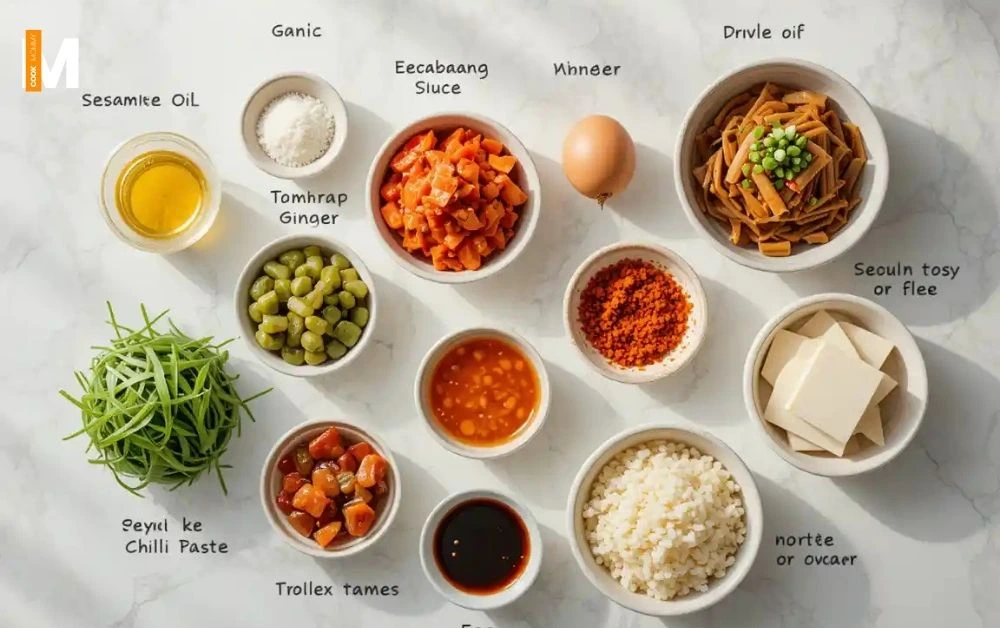
Substitution Tips:
- Swap beef with jackfruit or shiitake mushrooms for a vegan version.
- Use zucchini noodles instead of traditional rice noodles for a low-carb option.
- Replace gochujang with harissa in a pinch it won’t be authentic, but still tasty!
Timing
Total time: ~40 minutes per soup
Prep time: 10–15 minutes
Cooking time: 25–30 minutes
Compared to traditional stew recipes that may take 90 minutes or more, these spicy Korean soups are 30–40% faster perfect for weeknight dinners.
Step-by-Step Instructions
Here’s how to bring each bowl of spicy Korean soup to life. Use these flexible directions as a base for creativity.
1. Kimchi Jjigae (Fermented Spicy Delight)
- Start by gently frying garlic, onion, and kimchi in a splash of sesame oil until aromatic.
- Add gochugaru and gochujang; stir well.
- Pour in anchovy or vegetable broth.
- Add tofu cubes and simmer for 20 minutes.
- Garnish with scallions and serve with rice.
2. Yukgaejang (Spicy Shredded Beef Soup)
- Sear brisket with sesame oil, garlic, and soy sauce.
- Add water, shiitake mushrooms, and leeks.
- Mix in gochugaru and let the stew bubble away until the meat softens and soaks up the flavors.
- Add bean sprouts and glass noodles.
- Cook for 5 more minutes and serve piping hot.
3. Sundubu Jjigae (Silken Tofu Stew)
- In a clay pot, heat garlic, onion, and chili paste.
- Add seafood or mushrooms, then pour in stock.
- Carefully nestle silken tofu into the broth, then top with a raw egg to poach as it cooks.
- Simmer until bubbling, then serve with rice.
4. Doenjang Gochujang Soup (Fermented Fusion)
- Combine doenjang (soybean paste) and gochujang.
- Add chopped radish, zucchini, and mushrooms.
- Pour in dashi or veggie broth.
- Simmer 20 minutes; finish with sesame oil and scallions.
5. Spicy Ramyeon Upgrade
- Cook Korean ramyeon noodles in boiling water.
- Add gochujang, garlic, and kimchi.
- Top with boiled egg, nori, and chili oil for extra kick.
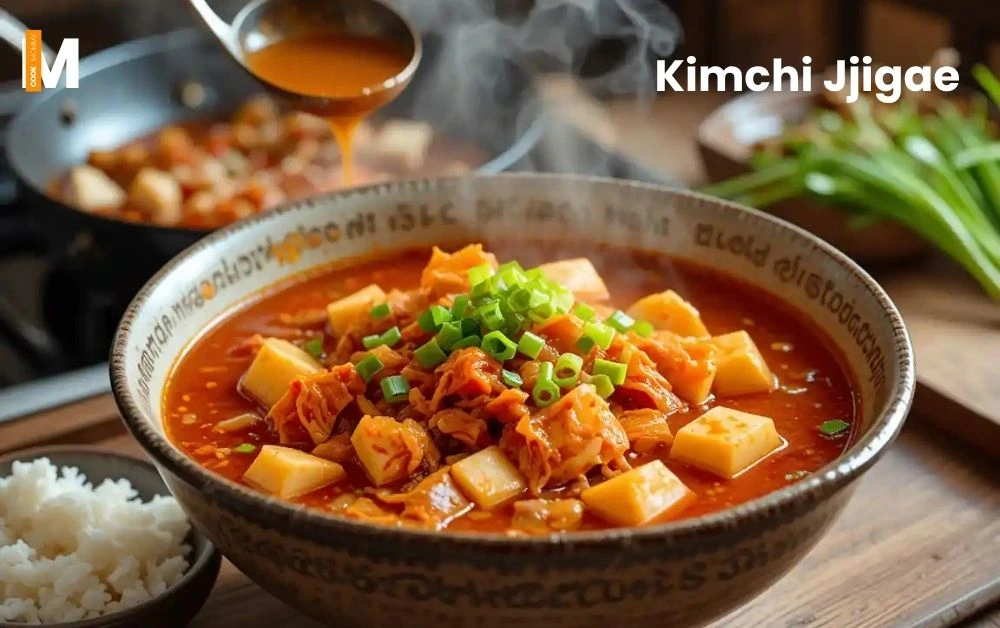
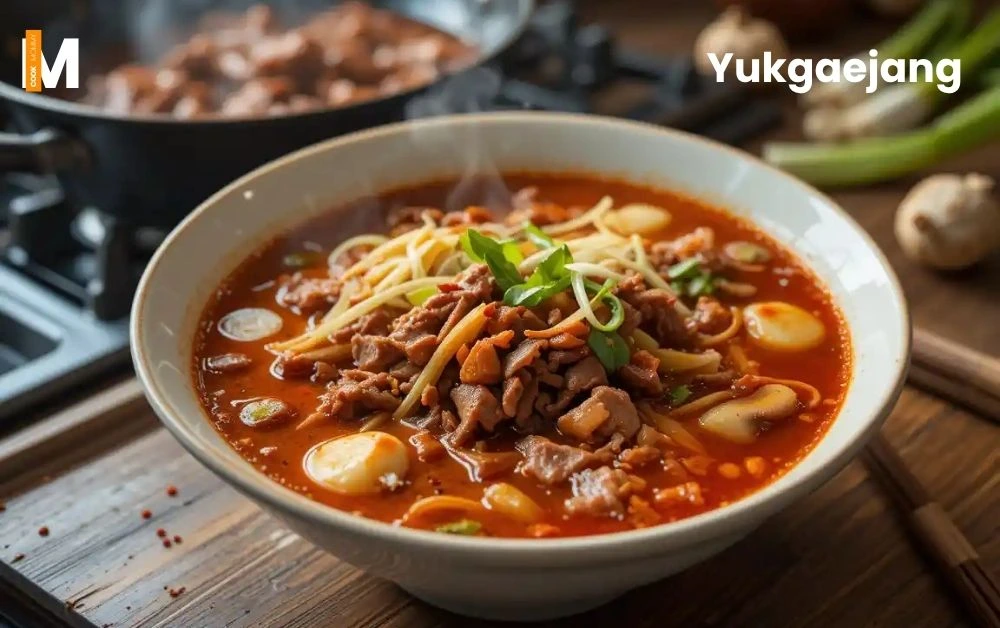
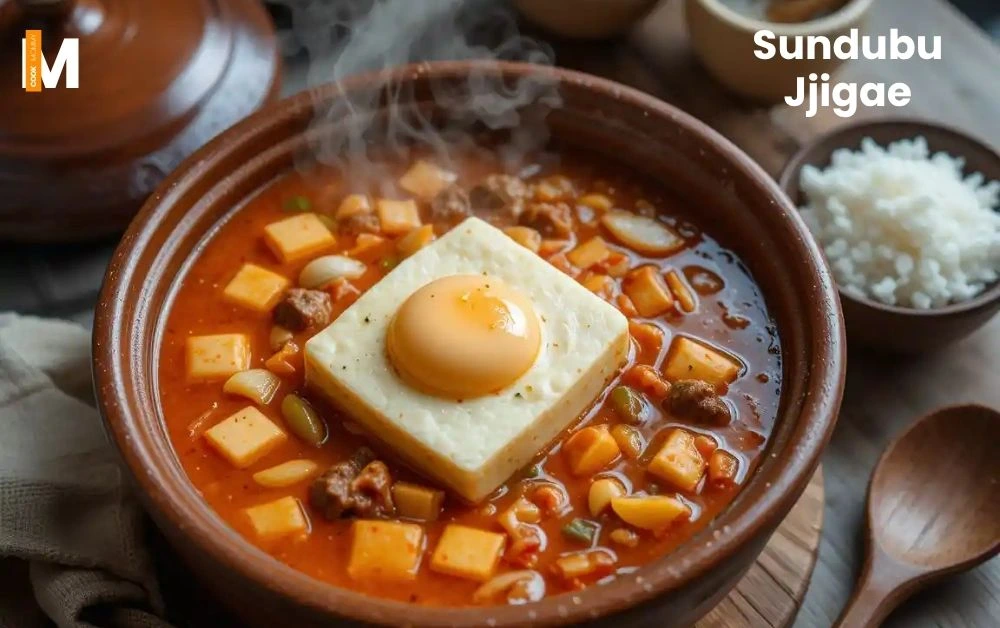
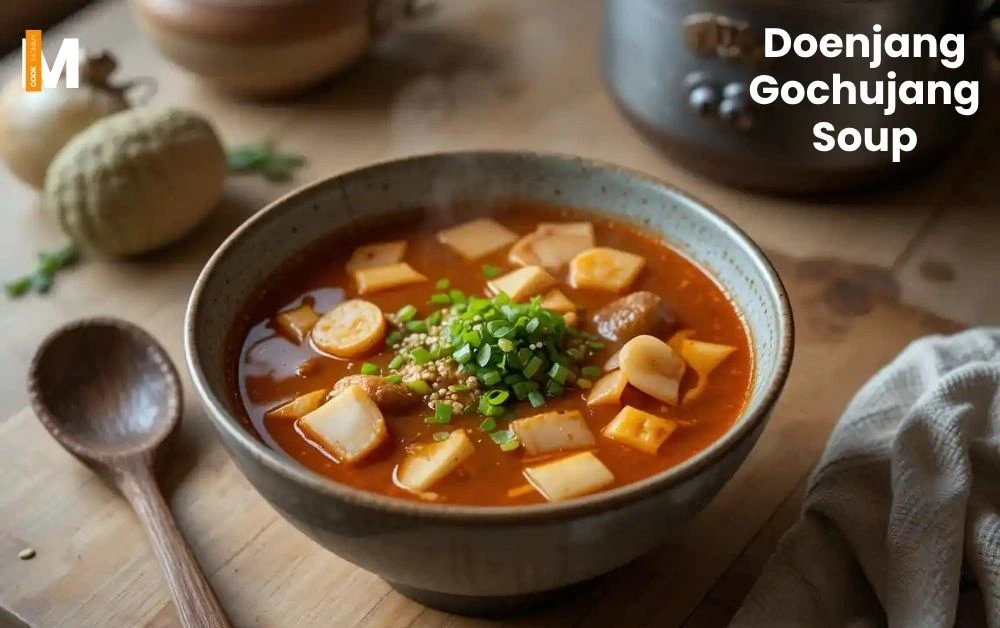
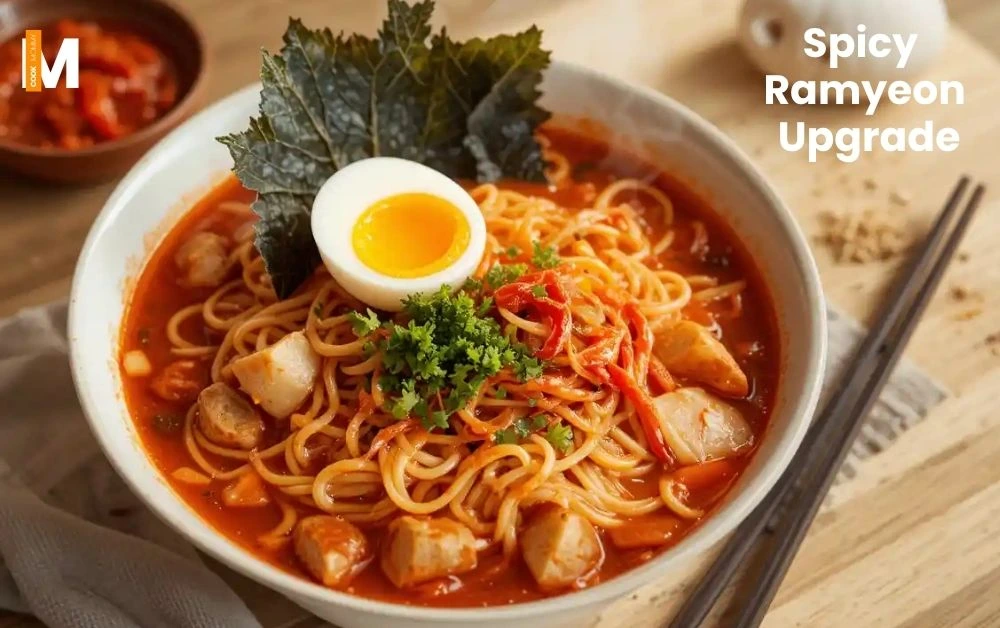
Nutritional Information
| Variant | Calories | Protein | Fat | Carbs | Fiber | Sodium |
|---|---|---|---|---|---|---|
| Kimchi Jjigae | 220 | 12g | 10g | 20g | 4g | High |
| Yukgaejang | 300 | 22g | 15g | 18g | 3g | High |
| Sundubu Jjigae | 250 | 14g | 12g | 15g | 2g | High |
| Doenjang Gochujang | 200 | 10g | 8g | 22g | 5g | Medium |
| Spicy Ramyeon | 400 | 10g | 18g | 40g | 3g | High |
Disclaimer: Nutritional figures may differ slightly depending on ingredient choices and portion sizes.
Healthier Alternatives for the Recipes
Looking for a lighter take on your favorite spicy Korean soup?
- Reduce sodium: Use low-sodium soy sauce or miso.
- Lower fat: Swap fatty beef cuts with lean chicken or tofu.
- Boost fiber: Add cabbage, kale, or mung bean sprouts.
- Vegan? Use kombu or shiitake broth instead of anchovy stock.
- Keto-friendly: Skip noodles and add zucchini spirals or shirataki.
Serving Suggestions
Make your spicy Korean soup experience even better with these pairings:
- With Rice: A classic side that balances the heat.
- Banchan (Korean side dishes): Kimchi, pickled radish, or spinach namul.
- Soft-boiled eggs: Creamy yolk cools down the spice.
- Toppings: Chopped scallions, sesame seeds, chili oil drizzle.
- Drink pairing: Cold barley tea.
Common Mistakes to Avoid
Avoid these common pitfalls when making spicy Korean soup:
- Skipping fermentation: Kimchi without fermentation = bland soup.
- Overloading spice: Balance gochujang with broth and sugar.
- Wrong tofu type: Use silken tofu for Sundubu, not firm!
- Boiling too hard: Simmer to preserve broth clarity and taste.
- Missing toppings: Garnishes add texture and depth don’t skip them!
Storing Tips for the Recipe
Want to prep ahead or save leftovers?
- Keep leftovers in a sealed container in the fridge; they’ll stay fresh for up to four days.
- Freezing: Most variants freeze well (except Sundubu); freeze in single portions for up to 2 months.
- Reheat gently: Avoid boiling again simmer on low to preserve texture.
Pro Tip: Freeze broth separately from noodles for better texture!
Conclusion
Spicy Korean soup isn’t just one dish it’s a dynamic culinary world packed with flavor, nutrition, and comfort. From the deep fermented zing of kimchi to the robust spice of shredded beef, these five bold recipes are proof that Korean soups can warm your body and soul.
Try your favorite version today, leave a comment with your twist, and don’t forget to subscribe for more comforting recipes!
FAQs
Can I make spicy Korean soup less spicy?
Yes! Reduce gochugaru or gochujang and add more broth or sugar to balance heat.
What is the best broth to use?
Anchovy or kombu broth is traditional, but chicken or veggie stock also works great.
Is spicy Korean soup healthy?
Absolutely. It’s low in fat, high in probiotics (from kimchi), and rich in flavor.
Is it okay to substitute ramen for traditional Korean noodles?
Yes, but Korean noodles offer a more authentic chew and absorb flavors better.
How do I make it gluten-free?
Swap in tamari for a gluten-free alternative, and always check the label on your gochujang to be safe.
Tried it before ?
There are no reviews yet. Be the first one to write one.

